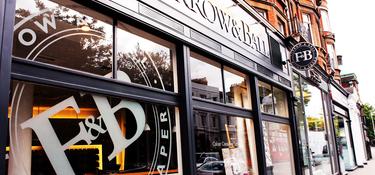2018 Christmas trading figures have been a mixed bag for UK retailers, with winners and losers on the High Street. One trend that continues though is the rise of online sales and the decline of physical retail sales. No surprise there then. However, look closely between the tabloid pages of doom and gloom and it’s possible to see a glimmer of hope for our High Streets. Look even closer and you’ll see that the revolution has already started.
Whilst there’s no doubt that our love affair with online shopping has impacted High Street sales over the past decade and shows no signs of waning, I’m optimistic that our High Streets will rise to the challenge and reinvent themselves to provide a different kind of retail experience –with the emphasis on experience. Mention Amazon and Apple, for example, and most people will think of their online offering; however, both these online giants are moving into physical retailing in a big way –and there’s a very good reason for that. Physical retail is a great place to showcase products, create powerful brands and offer users an experience, rather than a transactional exchange.
Recently, I was fortunate enough to take part in a ‘bricks and clicks’ panel discussion at the Develop Croydon regional conference. As you can guess, from the title of the session, conversations centred around the challenges and opportunities facing both traditional bricks and mortar retailers and their online counterparts. However, there was particular focus on how the regeneration of Croydon can create a template for the future, providing a thriving experience-based bricks and mortar retail and leisure experience, whilst providing the space and infrastructure required to house the distribution centres that act as a hub for the storage and distribution of goods to both physical retailers and homeowners.
There’s no doubt that we are experiencing a seismic shift in the way people select and purchase their goods. In its 2018 ‘Delivery Matters’ report, Royal Mail revealed that Online shopping in the UK has risen by 9% year on year, and that UK shoppers now make 87% of their retail purchases (that’s non-grocery items) online, up from 80% in 2017. Perhaps unsurprisingly, the report also found that just over half of UK consumers cited convenience as the main reason for purchasing goods online.
These retail trends are not unique to the UK, they are global, but the UK is at the forefront. Our spending online per capita is larger than the US and Europe, we are not sure what the future is going to be but it’s clear that bricks and mortar need to adapt, with technology changing consumer behaviour. Ultimately, the consumer will drive where that equilibrium lands.Today, more than ever, the retail landscape, be it physical or virtual, is all about time and, regardless of the size of their business, retailers ignore this fact at their peril. Time, in our modern society is more scarce than ever. With most households out at work during the week, ordering goods online is an obvious way to claw back precious minutes that could be used doing something else. And it’s that ‘something else’ that could really stand to benefit the physical retail experience.
With Croydon Council embarking on an ambitious programme of house building to boost supply of new and affordable homes for people in the area, the borough’s population is rising and set to rise even further. And, when you consider that over three quarters of these homeowners are going to be ordering goods online, you can appreciate the need to provide warehousing facilities close to the local population, enabling goods to be delivered more quickly and sustainably. Of course, we also need to appreciate that many of these homeowners will also want to feel a connection to the area in which they live: somewhere they can go to spend time with their family, eat, purchase local goods and services and enjoy cultural pursuits. This is where the High Street of the future can fulfil a need that ecommerce can never hope to satisfy.
Old retail is making way for new retail and traditional town centres like those in Croydon could lead the way to showcasing the future of physical retail. Pop-up stores for start-up businesses could provide a springboard for local businesses and retail stores could provide opportunities to really showcase products by allowing the consumer to look, feel and even taste the difference. After all, if you’re looking to spend a considerable amount of money purchasing a high-end coffee machine, for example, you’d want the reassurance of being able to see the item in action before you parted with your hard-earned cash, wouldn’t you?
With time in such short supply for many of us, the High Street could also serve-up retail as a side-dish to family outings to the cinema, coffee shop or leisure pursuits. Rather than department stores think compartment stores where you can access food, gaming, local boutiques, cinema and art galleries –all with access to free wi-fi and perhaps pick-up and drop off points for good ordered online or which need to be returned.
With some of the biggest online brands in the world turning their attention to physical retail,I’d like to think we can look forward to a reinvented, more vibrant High Street in the future: one where online and physical retailing both have complementary roles to play.

